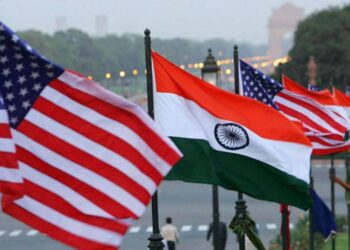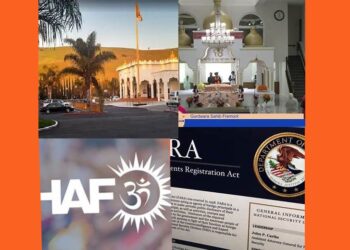The United States has long been a top destination for Indian students pursuing higher education, but in a significant shift, the 2024 admission cycle has seen an alarming surge in student visa rejections from Telangana and Andhra Pradesh. According to recent reports, over 50% of applicants from these states were denied F-1 visas, marking the highest rejection rate in 20 years.
This unprecedented development has sparked widespread concern among students, parents, and education consultants alike. Even students with admissions to Ivy League and other top-tier institutions have not been spared, prompting a re-evaluation of application strategies and preferred global destinations for Indian students.
Heightened Scrutiny from US Visa Officers
One of the primary reasons behind the high rate of denials is the increased scrutiny of visa applications by US consular officers. Study-abroad consultants based in Hyderabad and Visakhapatnam confirm that minor discrepancies in application documents, which might previously have been overlooked, are now resulting in immediate rejections.
These inconsistencies include:
- Mismatches in education history and transcripts
- Variations in personal information across application documents
- Unclear or insufficient financial support documentation
- Lack of clarity regarding post-study plans
Applicants are being asked detailed questions about their course choices, university selection, and long-term goals. If the answers are found to be vague or inconsistent, visa denials are being issued under Section 214(b) of the Immigration and Nationality Act, which presumes every visa applicant to be a potential immigrant unless proven otherwise.
Impact on Students and Families
The increase in rejections is having a significant emotional and financial impact on students and their families. In many cases, students invest months preparing for standardised tests, securing admissions, paying application and SEVIS fees, and attending coaching sessions for visa interviews. A rejection, especially after gaining admission to a reputed institution, can derail plans and cause immense distress.
For families from Andhra Pradesh and Telangana—states known for their strong emphasis on international education—the trend is especially concerning. Historically, a significant portion of Indian students in the US hailed from these regions, particularly from cities like Hyderabad, Guntur, and Vijayawada. Now, families are reassessing the viability of US education, with many considering alternative destinations.
Rise of Alternative Study Destinations
With US visa rejections rising, countries such as the United Kingdom, Canada, Germany, and Australia are seeing increased interest among Indian students. Within the UK, less-expensive regions like Wales and Scotland are becoming more attractive due to lower living costs and the presence of well-ranked universities.
Educational consultants report that the UK is especially popular because of its two-year post-study work visa, allowing international students to gain work experience after graduation. Germany is also gaining traction, thanks to its tuition-free education system and high demand for STEM professionals.
This shift is likely to continue if US rejection rates remain high, potentially altering global student mobility patterns.
Overstay Concerns Driving Rejection Rates
One key driver behind the tighter scrutiny is the growing concern over visa overstays by Indian students. According to the US Department of Homeland Security, approximately 7,000 Indian students overstayed their visas in 2023, making India one of the top countries in this category.
Most overstays reportedly occurred due to challenges in securing employment post-graduation, especially in sectors that require sponsorship for H-1B visas. As a preventive measure, US authorities are now taking a more cautious approach during the visa interview stage, filtering out candidates who may pose a higher risk of overstaying or violating visa terms.
This has led to:
- Tighter review of student profiles
- Increased demand for proof of intent to return to India
- Emphasis on strong ties to the home country
- Greater focus on academic preparedness and future plans
While these steps aim to protect the integrity of the US immigration system, they are also catching well-qualified and genuine applicants in the crossfire.
Visa Trends Over Two Decades
The current wave of rejections represents a significant departure from previous trends, particularly during the early 2000s and the 2010s, when Indian student numbers in the US steadily rose. According to data from the Institute of International Education (IIE), India consistently ranked second only to China in the number of international students enrolled at US universities.
However, policy changes under successive US administrations—combined with tighter immigration controls—have led to fluctuations in student visa approval rates. Recent years have also seen increased competition from other countries offering more favourable immigration pathways and work opportunities.
Preparing Better for US Student Visas
Given the changing landscape, students from Telangana, Andhra Pradesh, and other Indian states are advised to take a more meticulous and well-informed approach to the US student visa process. Recommendations from education experts include:
- Thorough document review: Ensure all personal, academic, and financial documents are accurate, consistent, and up to date.
- Mock interview preparation: Practice common and complex visa interview questions with trained counsellors.
- Clear post-study plans: Have a well-articulated explanation of academic goals and future career intentions.
- Demonstrate strong home ties: Provide evidence of social, economic, or family links to India to counter assumptions of immigration intent.
- Choose credible institutions: Preference for highly ranked or recognised universities can boost an applicant’s profile.
Government and Community Response
Education leaders and community advocates have urged Indian authorities to engage in dialogue with US officials to understand the rationale behind the rising rejection rates. There is also a push to provide better pre-departure counselling and support mechanisms for students, particularly in regional hubs.
At the same time, industry bodies such as the Association of Indian Universities (AIU) and EducationUSA are working to enhance transparency and awareness about the student visa process, helping prospective applicants avoid common pitfalls.
A Changing Future for Indian Students Abroad
The dramatic spike in US student visa denials from Telangana and Andhra Pradesh is a reminder of the fragile and complex nature of international education pathways. While the United States remains a highly sought-after destination, the recent developments signal a growing need for students to diversify their options, prepare more rigorously, and remain adaptable to changing visa landscapes.
As more Indian students explore opportunities in Europe, Australia, and other parts of the world, the global education map is undergoing a shift—one that will redefine how students from India’s southern states plan their academic futures abroad.
For more updates on international education and student mobility trends, explore NRIAffairs.com’s Study Abroad section.











